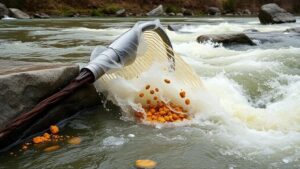Techniques for Sampling Deep Vein Copper Deposits in Rugged Areas
Techniques for Sampling Deep Vein Copper Deposits in Rugged Areas
The extraction and exploration of deep vein copper deposits present unique challenges, particularly in rugged terrains characterized by steep slopes, dense vegetation, and potentially unstable geological formations. Effective sampling techniques are essential to accurately assess the viability of these deposits. This article outlines various techniques used in sampling copper deposits, their applications, advantages, and limitations.
Understanding the Geological Context
Before employing sampling techniques, it is vital to comprehend the geological setting of the copper deposits. Rugged terrains often feature complexities such as fault lines, folding, and varying rock compositions. Understanding the lithology and structural geology assists in determining the most appropriate sampling strategy.
Sampling Techniques
A range of sampling techniques are employed in the exploration of deep vein copper deposits, each with its specific applications. Below are key techniques commonly used:
- Surface Sampling: This method involves the collection of samples from the surface or near-surface outcrops. It is particularly useful in identifying mineralization trends.
- Drilling: Core drilling provides direct access to deep vein deposits. It allows for the extraction of cylindrical sections of rock to analyze for copper concentration. Techniques include diamond drilling and reverse circulation drilling.
- Geophysical Methods: Techniques such as resistivity, induced polarization, and electromagnetic surveys help to characterize subsurface conditions without intrusive sampling.
- Geochemical Analysis: Soil and rock samples are analyzed for chemical signatures indicative of copper deposits. This method is often used in conjunction with physical sampling.
Case Studies and Examples
Practical applications of these techniques are evident in various mining projects around the world. For example, the Grasberg mine in Indonesia utilizes a combination of geophysical surveys and exploratory drilling to map out the extensive copper and gold reserves effectively. Their integrated approach enables them to tackle the challenging topography while maximizing the accuracy of their resource estimates.
Similarly, the Olympic Dam in Australia has integrated advanced geophysical techniques to delineate ore bodies. r use of borehole geophysics enhances the precision of drilling locations, reducing costs and improving yield.
Challenges in Sampling
Sampling in rugged areas is fraught with challenges that can affect the accuracy and reliability of data. Common issues include:
- Terrains Accessibility: Steep slopes can make it difficult to transport heavy drilling equipment.
- Environmental Considerations: Disturbing the land in fragile ecosystems can lead to regulatory hurdles and environmental concerns.
- Sampling Bias: Uneven distribution of copper can lead to misrepresentation if sampling is not sufficiently thorough.
Best Practices for Effective Sampling
To mitigate the challenges associated with sampling in rugged areas, several best practices should be employed:
- Site Preparation: Before commencing with sampling, conducting a thorough environmental impact assessment is crucial.
- Utilizing Drone Technology: Drones can help assess difficult terrains without disturbing them, providing valuable data on potential sampling sites.
- Integrating Technology: Employing GIS and remote sensing tools can enhance the precision of sampling efforts and minimize inefficiencies.
Conclusion and Actionable Takeaways
Sampling deep vein copper deposits in rugged terrains requires an integrated approach that combines traditional methods with innovative techniques. Understanding the geological context, employing multiple sampling strategies, and addressing the inherent challenges proactively are essential to achieving accurate and reliable data.
Practitioners should:
- Assess the geological and environmental context thoroughly before selecting sampling techniques.
- Use advanced technologies like drone surveys and geophysical methods to complement traditional sampling.
- Adopt best practices to mitigate challenges associated with rugged terrains.
By implementing these strategies, geologists and mining companies can enhance their exploration efforts, ensuring efficient and sustainable resource management of copper deposits in complex environments.

